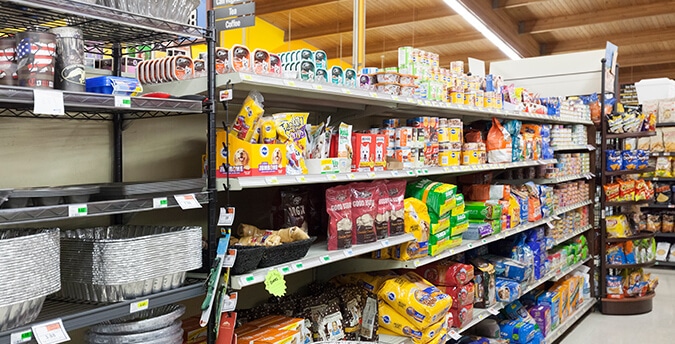Is Grain-Free Dog Food Something To Consider?

As a health-conscious person, you understand the importance of your diet and how it affects your physical and mental well-being. If you eat processed foods high in refined sugar and carbohydrates, you can expect your health to decline.
So why would it be any different for your four-legged friend? Our dogs also need excellent-quality nutrition to live a happy and healthy life. What you feed your dog determines their health for both the present and the future.
Most commercial dog food manufacturers base their kibble formulations on with proteins as a primary ingredient. And since corn and wheat are the most prominent grain crops in America, it’s not surprising to see these two grains listed on the top of the ingredients in many bags of dog food.
Recent nutritional studies reveal that a lot of grain can be bad for our health. Consuming excess carbohydrates, especially gluten proteins found in grain, can create gastrointestinal inflammation in the human body. This inflammation spreads to every part of the body, reducing our immune function and exposing us to infection.
While dogs have different digestive systems than humans, eating a grain-based diet can sometimes cause issues for them as well. Let’s evaluate the risks and rewards of your pup eating grain-free dog food.
CHANGES IN DOG DIETS
Dogs are primarily carnivorous by nature but as pets have become more omnivorous. Just like us, our furry friends need protein, fat, and carbohydrates to maintain their physical and mental health. Before the invention of commercial dog kibble formulas, most dogs ate a raw diet of meat, vegetables, and fruit.
However, the introduction of kibble and canned food experienced rapid growth among dog owners for its cost-effective convenience. As a result, dogs end up over-eating, and if owners don’t carefully manage their food intake, most dogs end up overweight as a consequence.
FOOD ALLERGIES AND DOGS
People who have celiac disease or non-celiac gluten sensitivity are allergic to the gluten proteins found in grains such as barley, wheat, and rye. For these people, eating gluten results in inflammation of the digestive system and, potentially, other issues.
Dogs, too, can experience this type of allergy. If you find that your dog is overly flatulent or experiencing loose stool, skin rashes, or ear infections – they may be allergic to the brand of food you’re feeding them. This might be a gluten sensitivity or some other food allergy, so get in touch with your vet for their advice and recommended food formulas.
It’s important to know that some breeds are more prone to food allergies than others. Boxers, Collies, Pit Bulls, Golden Retrievers, Dalmatians, Schnauzers, and Terriers are all known to exhibit food allergies to commercial brand dog foods. Of course, every dog is different, so again, consult with your vet if you notice your dog having issues with their food.
WHAT ARE THE BENEFITS OF YOUR DOG GOING GRAIN-FREE?
The recommended macro-nutritional profile for your dog’s meals should include 50 percent vegetables, 40 percent meat, and 10 percent grains. Many dog owners claim that they notice their dog has a shinier coat, brighter eyes, and a healthier-looking mouth when their dog is on a grain-free diet. While not all veterinarians recommend this kind of diet, it could be something to look into if your dog is experiencing any symptoms that point to a gluten allergy.
WRAPPING UP – TAKE IT SLOW
If you decide to transition your dog from foods with grain to a premium, grain-less dog food brand, it takes time for their gut to adjust to the change. Don’t swap all of their food out on the first day. This sudden change in diet can upset their stomach, and they’re likely to leave a mess all over your house.
Wean your pup off their old food by introducing the new kibble or fresh food in quarters over a few days. This strategy gives their stomach the time it needs to adjust to the new grain-free formula, and ensures that the new food is just right for them!
